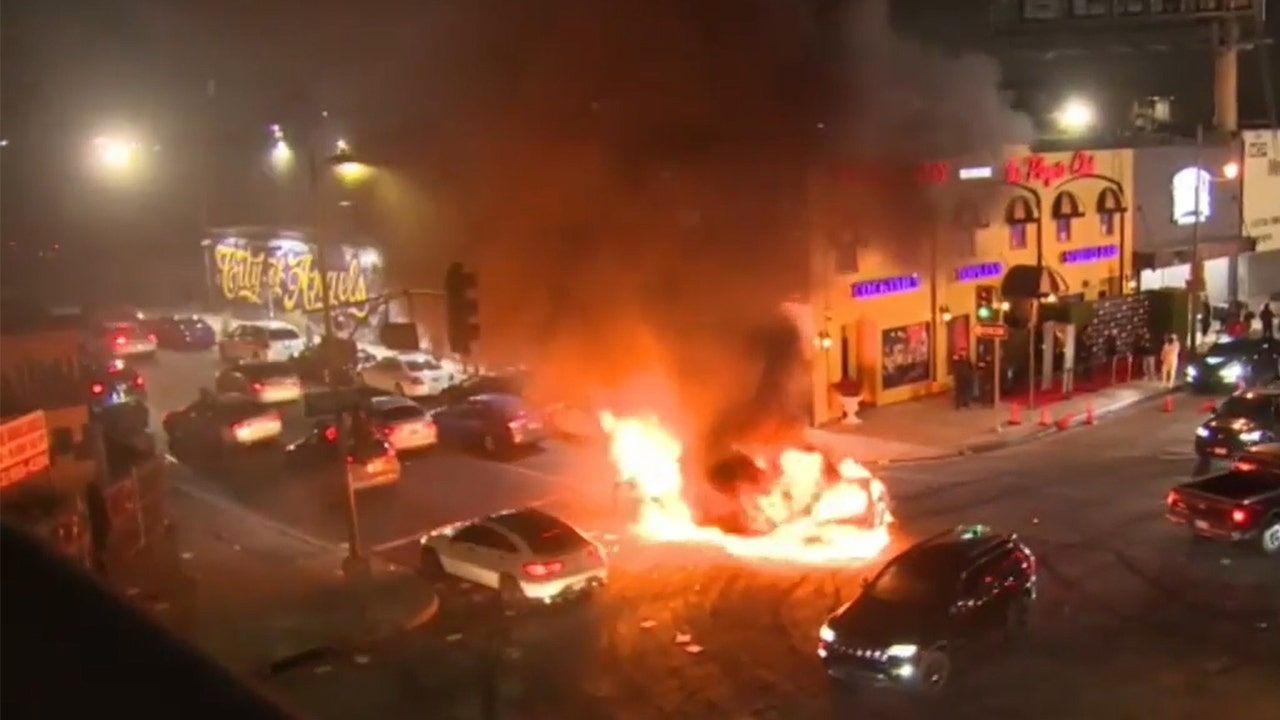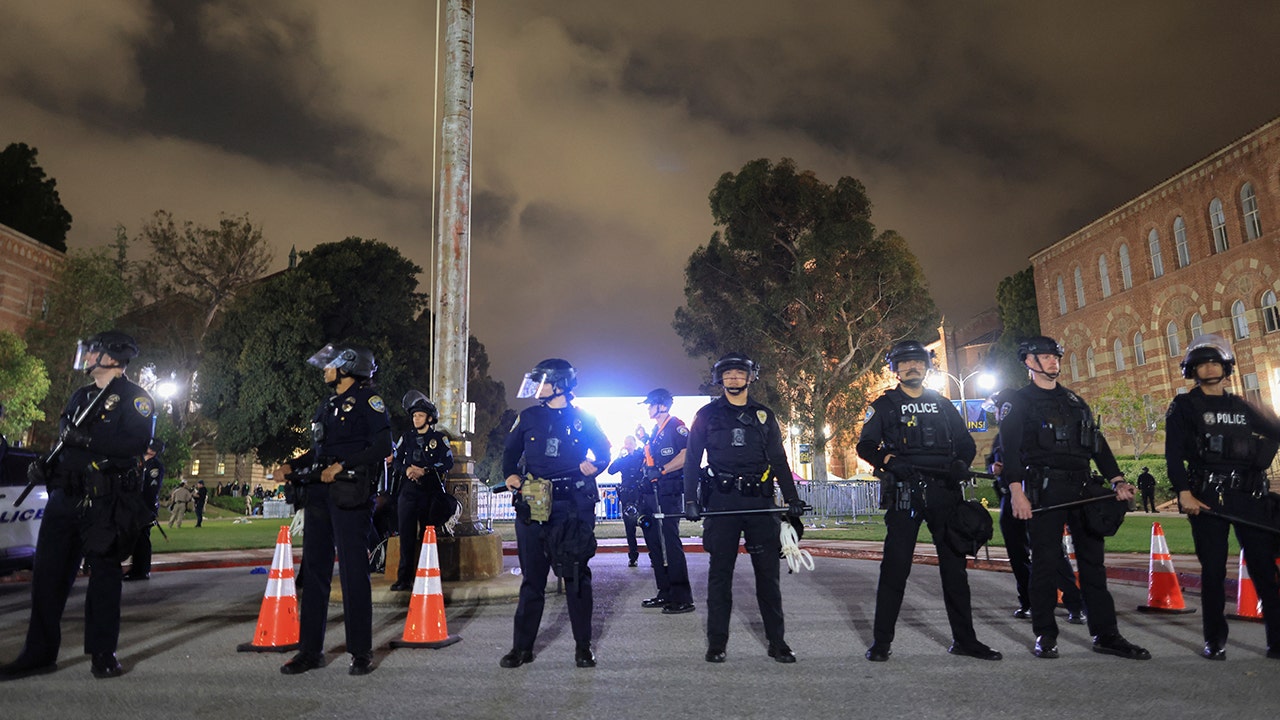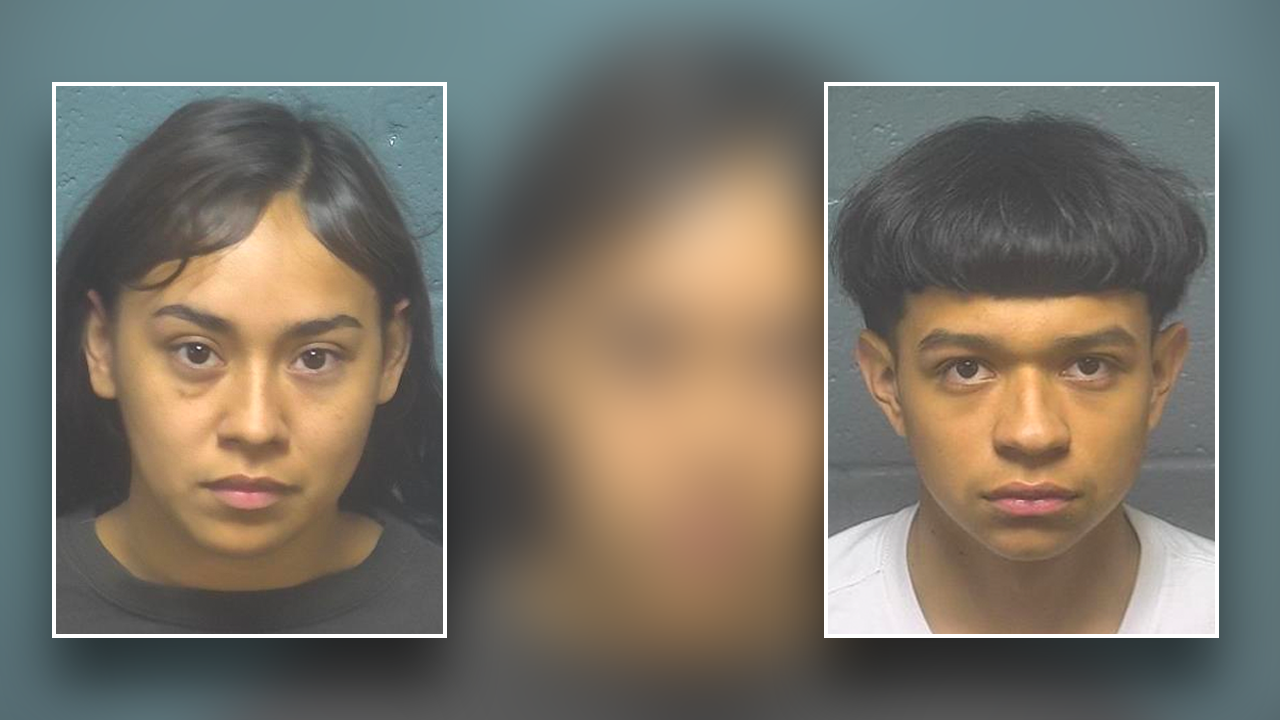The sky was muddy gray when I arrived at the Sams Memorial Stadium parking lot on a cool February afternoon. As soon as I parked, a school police officer appeared in a golf cart to rush me to the front of the parade line. I clambered aboard, one hand holding my large white Mexican sombrero rimmed with gold embroidered roses, the other scooping my thick, long skirt.
I was there for Charro Days, a festival that honors Mexican culture and our city’s intimate connection with Matamoros, Tamaulipas, across the border. As an alumna of the Brownsville school district, I’d been invited to serve as grand marshal of the children’s parade.
I felt regal dressed in a bright salmon pink traje de charro, a modified version of the traditional Mexican horseman outfit worn by mariachis and ranchera singers. As we whizzed by the century-old red brick buildings of my junior high campus, norteño music wafting from nearby speakers, my eyes welled up and I felt a lump in my throat.
Every year, right around Lent, life slows down in my hometown, and for eight glorious days we celebrate Charro Days. The first time I took part in the festival was in 1983, when my twin sister and I danced in the children’s parade to “La Cacahuata,” a norteño folk song, with our schoolmates.
During this week, residents often show up to work or school dressed in traditional Mexican clothing. Some wear charro outfits — the costume from central Mexico most associated with national identity. Others dress as chiapanecas and china poblanas, jarochas and tehuanas, in the blouses and skirts typical of the south. And there are lots of tamaulipecas, the fringed suede jackets of Tamaulipas.
To outsiders, it may all seem like a caricature of Mexican culture, but for Brownsville natives this is a time when we get to take pride and joy in who we are, in a country where it sometimes feels difficult to do so.
In the coming months, as the presidential campaign gets in full swing, Americans will no doubt be bombarded with visions of a broken U.S.-Mexico border. (Just this week President Biden issued an executive order that temporarily blocks most migrants from seeking asylum.)
What will be missing are portraits of the beautiful border some of us know — a place of community, continuity and celebration.
I like to say the border begins in Brownsville, where President James K. Polk first provoked a war with Mexico.
In April 1846, after the U.S. annexation of Texas, Polk dispatched 4,000 soldiers into the Nueces Strip in South Texas, ordering a land and water blockade of Mexican troops and civilians. Mexico claimed the border ran along the Nueces River in Corpus Christi, while the United States insisted it was the Rio Grande, 150 miles to the south.
When Mexican forces crossed the Rio Grande attempting to break the blockade, Gen. Zachary Taylor sent a small force to meet them. The Mexican Army fired, killing 11 American troops. Polk then convinced some skeptical members of Congress that it was an invasion.
The war ended two years later, with the Treaty of Guadalupe Hidalgo, which required Mexico to cede 55 percent of its territory to the United States. Soon surveyors began the task of demarcating the new border from the Gulf of Mexico to the Pacific Ocean, which was nearly 2,000 miles long.
Thus the U.S. Southwest was born, marking the beginning of American westward expansion.
As children, we didn’t learn much about our city’s pivotal role in the construction of our nation, but the repercussions of that history hung over us. Both sides of my family, the Ballís and the Hinojosas, had been in the region since the 1700s and once owned vast tracts of land that, as was true for most Mexican American families in the region, they lost over time to Anglo land grabbers. My paternal grandfather was raised in Texas but moved to Matamoros in the late 1910s, during a period of intense racial violence against Mexican Americans.
While the national boundary changed, the border remained fluid. My parents were born in Matamoros. After they married, they got jobs as seasonal farmworkers. Eventually they saved enough to build a home in Brownsville.
Even though a vast majority of students I went to school with in the 1980s were Mexican American, there was a strong pressure to assimilate. In first grade, my teacher gave me a C in English because I spoke too much Spanish with my friends.
On Sundays, we crossed the international bridge to visit our grandparents on their small ranch outside Matamoros, which had an outhouse and no running water. We ate tamales and celebrated Christmas there. At night, my grandmother lulled us to sleep with Mexican folk tales.
Mexican culture was the salve that helped blunt the pain of growing up in poverty and of my father’s eventual cancer diagnosis and premature death.
Living in Brownsville I was able to be both deeply Mexican and deeply American — and crossing the border showed me that it was possible to hold those two identities at once. I learned to shift between countries, cultures, societies and political systems, ultimately giving me a stronger sense of myself.
Charro Days was founded in 1938, the brainchild of a local white businessman who wanted to stimulate the economy during the Great Depression, draw tourists and cultivate civic pride. It eventually morphed into a four-day fiesta that included parades, street dances, fireworks, a carnival, a rodeo and motorboat races.
It soon captured the nation’s imagination. National Geographic wrote about it. Paramount and Universal showed reels of the event in theaters across the country. By the 1950s, radio and television networks were broadcasting some of the festivities from coast to coast.
Around the same time, the main parade began crossing over into Matamoros, which also held its own events. In 1954, the U.S. government began opening the Gateway International Bridge in downtown Brownsville, which connects the two cities, so revelers could cross back and forth freely during the festival.
But our binational ties would wear thin as the border became harder to cross.
Beginning in the early 1980s, hundreds of thousands of Salvadorans and Guatemalans fleeing civil wars poured into Brownsville and across other parts of the border. The Reagan administration responded by prosecuting religious activists who provided them safe harbor.
As world economies became more interconnected, the movement of people and goods across national borders increased. The attacks of Sept. 11, 2001, further changed the nature of border enforcement. The Department of Homeland Security was established in 2002; the Border Patrol eventually doubled in size.
In communities like Brownsville, these changes were felt intimately. Many residents stopped going to Matamoros, afraid of growing violence between Mexican drug cartels. With customs lines to get into the United States now stretching for hours, many Matamoros residents also lost the incentive to come to Brownsville.
After my grandmother died in 2022, my family, too, lost our anchor across the border. So, when the school district invited me to participate in this year’s parade, it was a chance to reconnect with an older Brownsville that I missed.
I arrived in town a few days early to attend Fiesta Folklorica, an evening event where the children who will dance in the parade perform for their families. Dozens of little girls in elaborate costumes stomped on the wooden dance floor and swirled their colorful skirts furiously, like butterflies ready to fly.
That morning, the White House announced that Mr. Biden would be coming to Brownsville the same day as the children’s parade to underscore his policy wins. For a moment, we weren’t sure if his visit would interrupt our celebration. It’s a form of theater that border communities are familiar with: politicians visiting, flanked by border agents and cameras.
The record numbers of migrants and refugees are undeniable. In the 2023 fiscal year, which ended in September, Customs and Border Protection apprehended over 2.4 million people at the southwest border, many of them hoping to gain asylum.
Border communities are sandwiched between the issue, the politics surrounding it and the often misguided policies, which can prove unhelpful or even make the situation worse.
In the end, the children’s parade went on as planned. When I arrived at the meeting point that day, the young costumed dancers were lining up behind the car I would ride in. They were a picture of sheer beauty and joy, decked out in red lipstick with flowers and bows on their heads.
“I like your dress!” one little girl yelled, pointing at me. “You’re so pretty!” another one said. I laughed and asked if I could take their picture.
A mile away, the Rio Grande meandered languidly. On the grounds of the old Amigoland Mall, carnival operators added finishing touches to the mechanical rides that would begin receiving thousands of guests that evening.
My car lurched forward and what followed was a sweet, nostalgic blur. Spectators on metal folding chairs cheered. Children dressed as small charros and charras flashed toothy grins and waved. One little boy with a mustache penciled on his upper lip took off his cowboy hat, twirled it chivalrously and bowed.
All the while local, state and federal agents lurked at every street corner: hulky tactical vehicles and men in camouflage with radios, buzz cuts and bulletproof vests. It was emblematic of all the increased policing we’ve seen on the border.
A woman waved, and I realized it was Mrs. Gomez, my former kindergarten teacher. A couple of bandmates from high school called out my name.
But it was my mom, aunts and cousins who screamed the loudest when I passed them in front of the old Majestic Theater. Fourteen blocks from where it started, the parade ended at the Gateway International Bridge — the bridge that had defined our lives.
As the festival wound to a close, I visited with Rosendo Escareño, the director of Charro Days Inc., the main organizer of the festival, and Henry LeVrier, the group’s board president. They described the simple satisfaction they get watching children enjoy themselves at the parades with their parents, as so many generations did before them. Every cycle builds the tradition. “It becomes a really huge memory for us,” Mr. Escareño said, “and that’s why we’re here, 87 years strong this year.”
While the country becomes increasingly divided over the border, during Charro Days, those of us from Brownsville have something that still brings us together. In one another’s waves along the parade route, in our approving gazes, we saw ourselves. We belonged to the same thing, the same place. A place called home.
Cecilia Ballí is a journalist and cultural anthropologist based in San Antonio. She is writing a book about competitive high school mariachis in South Texas.
Thalía Gochez is a photographer based in Los Angeles. The photographs of the Children’s Parade were taken during the Charro Days festival in Brownsville, Texas, this year.
The Times is committed to publishing a diversity of letters to the editor. We’d like to hear what you think about this or any of our articles. Here are some tips. And here’s our email: letters@nytimes.com.
Follow The New York Times Opinion section on Facebook, Instagram, TikTok, WhatsApp, X and Threads.






